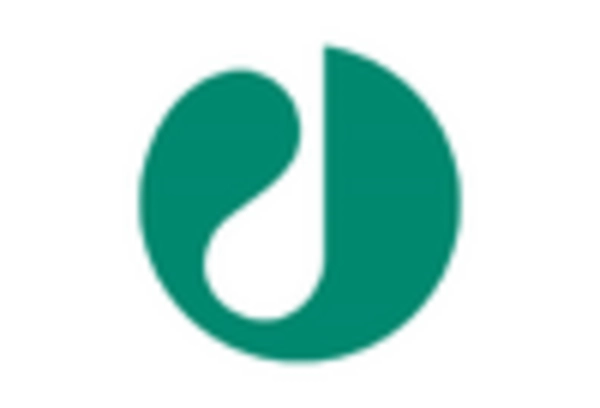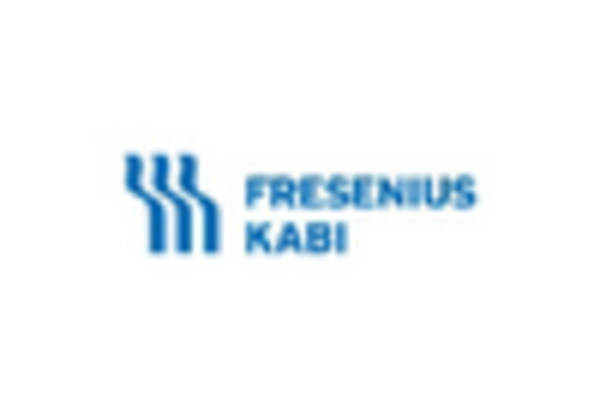Rising Healthcare Expenditure
The increasing healthcare expenditure in the UK is a pivotal driver for the platelet agitator market. As the National Health Service (NHS) allocates more funds towards advanced medical technologies, the demand for efficient blood component processing equipment, including platelet agitators, is likely to rise. In 2025, healthcare spending in the UK is projected to reach approximately £200 billion, reflecting a growth of around 5% from previous years. This financial commitment to healthcare innovation suggests that hospitals and blood banks will invest in state-of-the-art platelet agitators to enhance operational efficiency and patient outcomes. Consequently, the platelet agitator market is expected to benefit from this trend, as healthcare facilities seek to improve their blood processing capabilities.
Increased Focus on Patient Safety
A heightened focus on patient safety in the UK healthcare system is driving demand for reliable platelet agitators. Regulatory bodies and healthcare providers are prioritising the minimisation of risks associated with blood transfusions and component storage. This emphasis on safety has led to the implementation of stringent guidelines for blood processing equipment. As a result, hospitals and blood banks are investing in high-quality platelet agitators that comply with these regulations. The platelet agitator market is expected to expand as facilities seek to enhance their safety protocols and ensure the integrity of blood components, thereby improving patient outcomes.
Growing Awareness of Blood Donation
The growing awareness of blood donation in the UK is significantly influencing the platelet agitator market. Campaigns aimed at encouraging blood donations have led to an increase in the number of donors, which in turn necessitates efficient processing of blood components. The UK Blood and Transplant (UKBT) service reported a 10% increase in blood donations in 2025 compared to the previous year. This surge in donations creates a pressing need for advanced platelet agitators to ensure optimal storage and processing of platelets. As blood banks strive to meet the rising demand for blood components, the platelet agitator market is poised for growth, driven by the need for reliable and effective equipment.
Expansion of Blood Component Applications
The expansion of applications for blood components is a significant driver for the platelet agitator market. With advancements in medical treatments and therapies, the demand for platelets in various clinical settings is increasing. For instance, the use of platelets in cancer treatment and surgical procedures is becoming more prevalent. This trend is likely to boost the need for efficient platelet processing and storage solutions. The platelet agitator market is expected to grow as healthcare providers adapt to these evolving applications, ensuring that they have the necessary equipment to meet the rising demand for blood components.
Technological Integration in Blood Processing
Integrating advanced technologies in blood processing is a crucial driver for the platelet agitator market. Innovations such as automation and real-time monitoring systems are being increasingly adopted in blood banks and hospitals across the UK. These technologies enhance the efficiency and safety of blood component processing, making platelet agitators an essential part of modern blood management systems. The market for automated blood processing equipment is expected to grow at a CAGR of 6% over the next five years, indicating a strong trend towards technological adoption. As facilities upgrade their equipment to incorporate these advancements, the platelet agitator market is likely to experience substantial growth.

















Leave a Comment